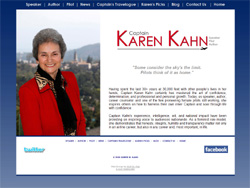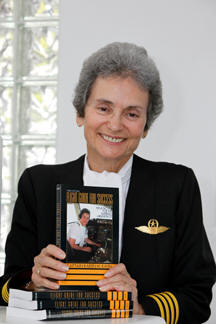READ THOSE CHARTS CAREFULLY
“But he told me to do it,” whined the pilot as he sat
before the Administrative Law Judge.
As pilots our tendency is to follow ATC’s instructions…sometimes
without taking the time to carefully analyze what you’ve been asked to do. On my last flight, I almost fell into that
trap…until I READ THE FINE print.
Flying along V12 from DRK (Prescott, AZ) to PMD (Palmdale,
CA) I was a bit surprised to receive a reroute from ATC changing my clearance
from V12 to PMD, V386 to FIM, Direct KWANG, KSBA. I knew the new airspace restructuring a few
years back had added new arrivals to our SoCal Tracon area, but recalled not thinking
much about them as they pertained to high altitude arrivals and I’m a
low-altitude B55 Baron…definitely not a high-flyer. Matter of fact, to keep my brain clear for
the instrument approach I knew lay ahead, I even had on my “nose hose” as I’d
been flying at 10,000’ for over an hour and knew that my personal oxygen
saturation dropped quickly below my 90% minimum when flying above 8000-9000
feet MSL. I was already planning for a lower
enroute altitude after HEC where the MEA dropped down to 7900…so I could take
off the O2.
To my surprise, I got a call from ATC telling me he had a
reroute for me after HEC, “Advise when ready to copy.” Hmm, I thought, that’s strange, not much in
the way of alternatives out here in the desert, I wondered what they had in
mind. The clearance read: “After HEC,
you’re cleared to KSBA via the PitBl 1 Arrival, Maintain 10,000.”
After spending some time figuring out how to add an
Arrival to my Avidyne 540 FMS screen (I ended up going into Heading Hold on the
autopilot, deleting the rest of my flight plan and then adding the Pitbl1
routing and reentering my destination. I’d
asked for lower, but ATC wanted me to stay at 10,000. Hmm, what to do?
A few minutes later, I began to recall another flight
where I was saved by my copilot checking carefully the chart and so I
decided it was time to get out the “real deal”
(read: actual textual description of the procedure, not just call it up
in the FMS) and look carefully at what had been assigned to me…not just type it
into the “box” and figure that was the way it would be. I looked at the routing and was glad to see
that the Pitbl One Arrival did, indeed, go over KWANG intersection, the IAF for
KSBA. The altitudes were all very high, but I’d been told to “Maintain 10,000”
so that was an acceptable deviation from the printed word, but a bit strange
given how much lower I would be than some of the altitudes printed on the chart
(FL240, 17000).
And then I began to read those All-Important Notes. Number 4 was the red flag: “Turbojet and turboprop aircraft only.” Yep, that’s why I’d never received this
arrival in the past and why I’d disregarded studying it several years ago when
it first appeared in the KSBA charts.
Now I knew why this procudure had seemed wrong to me. ATC had
goofed. They either thought I was a
turboprop or hadn’t read the fine print themselves.
Armed with my newly discovered information, I asked LA Center to return to my original route, given my mere lowly status as a light piston twin. They fumbled for a moment, but returned shortly with a “75KG is cleared to KSBA via V12 PMD, V386 FIM KWANG DIRECT.” Now that sounded better and a whole lot more like my kind of low-level flying.
Had I been closer to my destination I would probably have
questioned the clearance sooner, but given the extra time between me and
landing (almost an hour) I figured I had time to do some research. After fixing the problem, I recalled how another
flight from KSNS (Salinas, CA) to KSBA had almost got me in trouble on a departure.
That time, the turn after takeoff on the Chalone Three
Departure showed up on my FMS as “leaving 500 feet fly heading 084.” I was departing off Runway 31…and if you were
given a “fly heading 084” you’d normally turn right (the shortest way around)
to 084. Fortunately, my copilot that day
was a good stickler for details and he pulled up the chart for that departure. We were both amazed to see that they wanted a
LEFT turn to 084 (the long way around) and, even more surprising, the FMS had said
nothing about turning LEFT…just “fly heading 084.” Sounds like a violation waiting to happen.
So for all you IFR pilots, keep reading those charts
carefully, particularly the Notes and the fine print. Things aren’t always what you expect…and NOT
reading the chart carefully beforehand is no excuse for a pilot deviation and going to sound might poor at a possible (NTSB) hearing!





